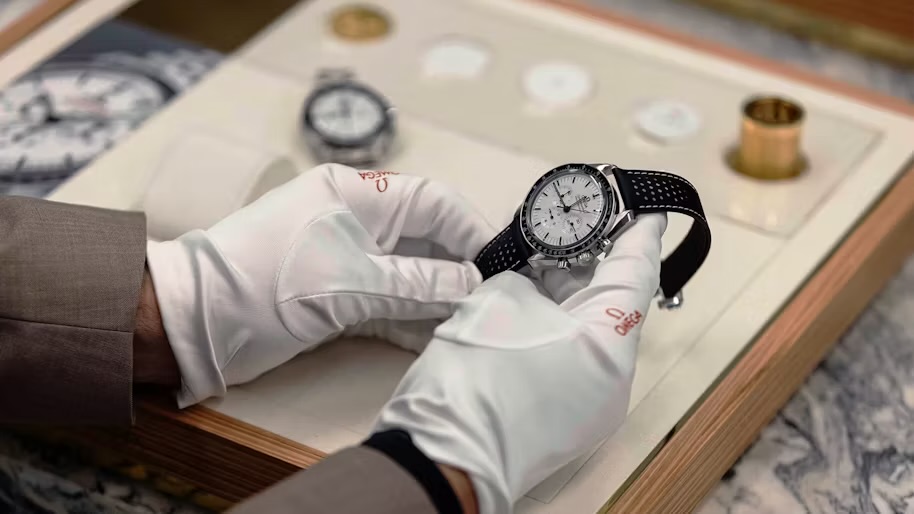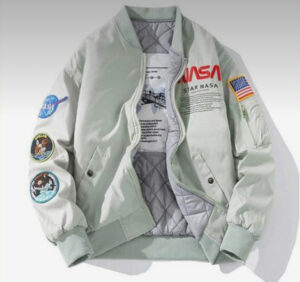In an era when global trade is often reshaped by tweets, political brinkmanship, and shifting alliances, even the haute watch industry—long considered a bastion of timelessness—is being forced to recalibrate. Nowhere is this more apparent than at Omega, where CEO Raynald Aeschlimann is navigating an unsteady market punctuated by tariff threats, consumer hesitation, and the looming backdrop of international uncertainty.
Despite these challenges, Omega is pressing ahead with what should be a celebratory year: the 60th anniversary of the brand’s historic NASA flight certification. In 1965, Omega’s Speedmaster was officially approved for use on all manned space missions, securing its place in horological lore as “the Moonwatch.” But as the Swiss giant prepares to honor that legacy with a series of commemorative releases, trade policy turbulence may render the path forward more complex than expected.
A Market in Suspense: The Tariff Effect on Luxury Watches
Tariffs—once the concern of agribusiness and manufacturing—have increasingly reached into the realm of luxury. Following surprise announcements of potential trade levies targeting European exports to the United States, the watch industry has found itself on uncertain footing. Though not yet finalized, the prospect of steep import tariffs on Swiss watches—similar to those temporarily imposed in previous trade disputes—has already begun to spook retailers and dampen consumer enthusiasm in key markets like North America.
Raynald Aeschlimann, speaking at a recent industry summit in Geneva, emphasized the risk of hesitation: “Our clients are not simply driven by impulse—they research, they compare, and when tariffs or trade instability enter the conversation, it introduces an element of doubt. For collectors and first-time buyers alike, uncertainty delays decision-making.”
Omega is not alone in this concern. Executives at other leading watchmakers, including Rolex, Patek Philippe, and TAG Heuer, have echoed similar sentiments. For brands that rely heavily on U.S. clientele, even temporary disruptions in price stability can ripple across quarterly earnings and supply chain forecasting.
Heritage Amid Headwinds: Commemorating NASA and the Speedmaster Legacy
Despite the looming economic uncertainty, Omega’s milestone moment remains undiminished in cultural significance. The 60th anniversary of NASA’s endorsement of the Speedmaster isn’t merely a marketing opportunity—it is a reaffirmation of the brand’s deep ties to one of humanity’s greatest technological achievements.
In 1965, after rigorous testing under extreme conditions, the Omega Speedmaster became the only watch flight-certified for use on all NASA manned missions. It accompanied astronauts on spacewalks, moonwalks, and even critical emergency procedures—most notably during the Apollo 13 mission, when it helped time crucial engine burns.
This year, Omega plans to unveil a suite of anniversary editions drawing from this storied past. Though details remain under embargo, industry insiders anticipate a modernized Speedmaster Professional model that incorporates both vintage cues and new materials—perhaps including ceramic bezels, upgraded Co-Axial calibers, and specialized engraving or packaging that references its NASA heritage.
“There’s something uniquely unifying about space,” Aeschlimann remarked. “And in the Speedmaster, we have a symbol of precision, endurance, and international cooperation. The watch is not just a product—it’s a story we’re all part of.”
Consumer Psychology in a Tariff Era
What complicates this commemorative effort, however, is the psychological environment in which it lands. Consumers—especially in the luxury category—are increasingly attuned to macroeconomic indicators. The pandemic years taught them caution; geopolitical instability has only reinforced it. Now, with the specter of tariffs casting long shadows, there is growing concern that prospective buyers may delay or even abandon high-ticket purchases.
The result, according to Aeschlimann, is “a potential mismatch between the moment’s importance and its commercial realization.” Luxury watch sales are often built on anticipation—on launching new collections at the precise moment when desire and availability align. When buyers begin to hedge based on future pricing fluctuations, the momentum of a product release can stall.
In response, Omega and other industry leaders are exploring incentive mechanisms to stabilize demand. These include limited-time price assurances, expanded domestic availability to bypass import restrictions, and enhanced customer service experiences aimed at reinforcing brand loyalty even when the external environment grows tense.
An Industry-Wide Reckoning
Beyond Omega, the Swiss watch industry as a whole is reassessing its exposure to global trade dynamics. The Federation of the Swiss Watch Industry (FH) has already begun lobbying EU and U.S. trade officials for clarity and exemptions, emphasizing that high-end horology should not be penalized alongside mass-market goods.
“This isn’t simply about luxury,” said one FH representative. “Swiss watchmaking is a heritage craft, a cultural export, and a major source of employment. When we speak of tariffs, we’re also speaking of artists, engineers, and entire communities whose livelihoods depend on access to open markets.”
Some brands have responded by accelerating diversification. Independent watchmakers with smaller production volumes have increased their presence in the Middle East and Southeast Asia—markets less directly affected by U.S.-EU tensions. Others, like Swatch Group (Omega’s parent company), are quietly investing in regional distribution hubs to reduce customs exposure and streamline supply lines.
The Speedmaster’s Enduring Power
Tariffs and trade drama aside, there remains one immutable truth in the luxury watch world: few models command as much devotion as the Omega Speedmaster. From astronaut Buzz Aldrin to modern-day micro-influencers, the Moonwatch’s mythology continues to capture imaginations across generations.
For collectors, the upcoming anniversary edition may become a grail piece—not just because of its exclusivity or innovation, but because of what it represents: continuity in a world of flux. In this sense, Omega’s launch is about more than commemorating the past; it’s a wager on timelessness in an era of volatility.
“Time is always political,” Aeschlimann noted in closing remarks. “But watches like the Speedmaster remind us that some moments—like walking on the moon—can transcend it.”
A Look Ahead: Strategy, Scarcity, and Sustainability
Looking to the future, Omega is doubling down on what it can control. Despite potential tariffs, the brand is investing in in-house movement innovation, expanding certified pre-owned programs, and emphasizing sustainability in packaging and sourcing. These shifts align with consumer values, particularly among younger buyers who demand transparency and ethical production.
Meanwhile, scarcity continues to drive demand. Omega is keenly aware that artificially limiting production—especially of special editions—can help insulate pricing and stoke desire. Whether this strategy can weather economic crosswinds remains to be seen, but so far, collector appetite has remained robust.
There’s also a renewed focus on direct-to-consumer relationships. Omega’s network of boutiques has expanded strategically, offering not just a place to buy watches, but to experience the brand’s history and craftsmanship in an immersive, narrative-driven format. These spaces may prove crucial in bridging the gap between luxury as product and luxury as experience—especially if price uncertainty continues to cloud the market.
Impression
As Omega navigates the stormy waters of global trade, the symbolism of the Speedmaster anniversary becomes all the more poignant. Sixty years ago, the brand secured its place in history not through marketing, but through merit. NASA didn’t choose the Speedmaster because it looked good—it chose it because it performed better than any alternative in tests of pressure, temperature, and shock.
Today, Omega once again finds itself tested—though by markets, not missions. The challenge now is to prove that even in an era defined by disruption, the values that launched a watch into space still resonate. Precision. Durability. Vision.
If the Speedmaster’s journey to the moon was about reaching the unknown, its anniversary journey is about reaffirming what is known: that great design, great storytelling, and great engineering can outlast politics and policy alike.
Tariffs may delay purchases. They may even alter short-term strategies. But for Omega, and the watch world at large, time is still on their side.
No comments yet.








